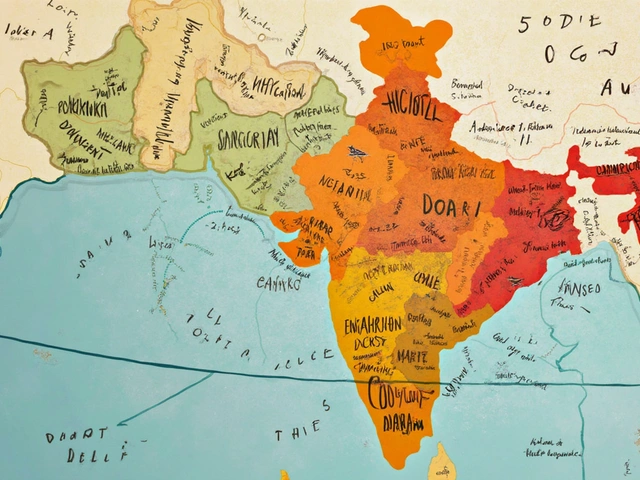Scrolling through Instagram or watching YouTube, you might wonder: How do people turn ordinary content into a thriving business? The answer is digital marketing. It’s not just for tech wizards or big companies with stacks of cash. With a laptop and some dedication, anyone can start teaching themselves digital marketing and actually make it work.
Cracking the Digital Marketing Mindset
Okay, before you even crack open a browser tab labeled “SEO crash course,” you’ve got to get your head in the game. This isn’t like memorizing algebra equations or studying poetry. Digital marketing is messy, hands-on, and ever-shifting. It’s about hacking your way through problems and trying new tools, not just learning definitions. That means you’ll need the guts to experiment, the patience to try and fail (and try again), and the curiosity to ask “what if?” constantly.
One thing sets digital marketing apart: things change fast. Google rolls out hundreds of algorithm tweaks every year. Social media trends blast through and die in months. Some stuff that worked great five years ago is useless now—remember when every brand jumped on Facebook memes? Now, Gen Z would roast you alive for using those same jokes on TikTok.
You’ve got to be cool with the fact you’ll never know everything. There are too many angles—social, email, paid ads, content, analytics, branding, automation, you name it. The best digital marketers are hungry to keep learning and share their ideas with others (even if it’s just in Reddit threads). They know a killer campaign is more than just plugging buzzwords—it’s real skills and creative thinking.
Here’s a wild fact: According to LinkedIn’s 2025 Emerging Jobs Report, digital marketing specialist roles have surged 49% worldwide since 2020. People from all sorts of backgrounds—from art majors to accountants—are nabbing these jobs by teaching themselves online. You don’t need a classic marketing degree. What you really need is grit, a DIY attitude, and knowing where to look for legit info.
Pick a Focus First, Don’t Try to Learn It All
Trying to absorb digital marketing all at once is like walking into a gym and trying to lift every weight at the same time. Not gonna happen. You’ve got to pick one main area to start with. Are you excited by making TikToks go viral? Start with social media. Do headlines and blog articles appeal to you? Go for content marketing. Want to help websites show up on Google? Dive into SEO.
The main branches of digital marketing include:
- SEO (Search Engine Optimization): Helping sites rank on Google so people actually find them.
- PPC (Pay-Per-Click): Running paid advertisements on platforms like Google, Facebook, and Instagram.
- Content Marketing: Creating blog posts, videos, memes, podcasts—anything that entertains, educates, or informs.
- Email Marketing: Building and nurturing lists to drive traffic and sales through email campaigns.
- Social Media Marketing: Engaging audiences on platforms like Instagram, Twitter, Facebook, TikTok, and LinkedIn.
- Analytics: Using tools to measure what works, tweak your tactics, and get smarter results.
Most beginners start with content or social because you can do it with low (or no) budget. Plus, you see immediate feedback. Post something on Instagram and get 10 likes? You know it resonated. Next step: Figure out why and do it better next week.
The digital marketing world is overloaded with distractions. Don’t buy every course from self-styled “gurus.” Instead, look for step-by-step beginner guides from credible sources. Google Digital Garage, HubSpot Academy, and Meta Blueprint have free courses made by brands who know their stuff. These aren’t get-rich-quick schemes—they teach you skills you’ll actually use. Then, go practice these skills by setting up your own blog, Instagram, TikTok, or YouTube channel. Nothing beats hands-on learning.
Build Your Toolkit: Platforms, Free Resources, and Must-Have Skills
Plenty of marketers think expensive tools are the secret. If you can Google, create a spreadsheet, and type a social post, you’ve already got what you need to start.
Still, some free resources can save you loads of time and give you a pro edge—even as a self-taught rookie:
- Google Analytics – Tracks website visitors, where they come from, and what they do. Free and essential.
- Google Trends – Shows what people are searching for right now. Perfect for content ideas.
- Buffer or Hootsuite – Free social media scheduling tools to post updates even when you’re not online.
- Mailchimp – Launch your email marketing for free (up to 500 subscribers).
- Canva – Design sweet graphics, even if you failed art class in grade school.
- HubSpot Academy – Courses on everything from inbound to sales funnels (all free and beginner-friendly).
Let’s talk skills. Forget fancy terminology; you need to know how to:
- Write headlines that stop scrollers in their tracks.
- Analyze what content’s working and ditch what’s not.
- Create visuals that match your brand (even if it’s just you making memes for now).
- Experiment, track results, and adjust—aka, growth hacking at its simplest.
- Understand basic SEO (keywords, titles, meta-descriptions).
Never underestimate the power of simply following top marketers on Twitter or LinkedIn. See how they pitch ideas, analyze posts that go viral, copy their headline structure, and adapt to what works for your style and audience. Copying isn’t cheating—it’s how every great creative, from musicians to chefs, learns the ropes at first.
Here’s an eye-opener: A 2024 case study by Demand Metric found that content marketing costs 62% less than traditional ads—and generates about 3x as many leads. That’s huge for self-taught folks working solo. Table below shows a few basics you’ll want to get comfortable with on your self-taught journey:
| Skill | Free Tool | Why It Matters |
|---|---|---|
| SEO | Google Search Console | Rank higher on Google, attract free visitors |
| Email Marketing | MailChimp | Direct connection to audience, high ROI |
| Social Media | Buffer, Hootsuite | Build an engaged following |
| Analytics | Google Analytics | Measure if your work is helping |
| Graphic Design | Canva | Make eye-catching posts and ads |
The more you play around with these, the more sense digital marketing will make. Don’t be afraid to break things—set up test campaigns, use fake budgets, and see how each channel behaves. This is how most marketers discover what actually works.

Practice Makes Profit: Run Your Own Experiments
Here’s the kicker—watching courses or reading blog posts won’t magically make you a digital marketer. You have to get your hands dirty. That could mean starting your own passion blog, running a meme Instagram, setting up a DIY store with a print-on-demand service, or even helping out a friend’s small business with their socials. These aren’t just practice—they’re actual proof you know your stuff, which helps big time when you’re job hunting or pitching clients later.
Let’s say you launch a backyard gardening blog. Track what headlines bring in clicks from Google. Notice which Insta Reels get saves or DMs. Test different email subject lines and see what opens. Write guest posts for other newbie gardeners. Each experiment = digital marketing experience. You can mention these real results in your portfolio, on LinkedIn, or even in job interviews.
One of the best DIY strategies? Document everything. Keep a simple spreadsheet or Notion doc with campaign ideas, test results, what tanked, and what surprised you. Revisit your best-performing content—did it have stronger visuals, hit a hot trend, or just land at the right time? Data beats gut feeling every time.
And here’s something a lot of beginners miss: Track the outcome, not just the activity. Don’t just count likes; see if people shared, clicked, or actually bought something. A 2024 Shopify survey showed that brands that track sales from social campaigns make 38% higher profits on average. That’s a winning habit to start early.
- Set one clear goal per experiment. Example: Get 100 newsletter signups in a month.
- Write down what you tried (the headline, the platform, the time of day).
- Note the actual result. Hit the goal? Beat it? Miss by a mile?
- Change one thing at a time and go again.
This approach isn’t just practical—it’s addictive, and it works better than reading 20 eBooks you’ll never use.
Stay Sharp: Where to Learn, Who to Follow, and How to Keep Up
Digital marketing doesn’t stand still. The platforms you use now might totally flip in a year. (Just ask anyone who grew their audience on Vine.) The trick: Build a habit of learning from the best.
Don’t waste time in endless “best free digital marketing course” Google searches. Pick a handful of trusted resources, stick to them, and keep practicing. Start here:
- Google Digital Garage – Free, up-to-date fundamentals courses from SEO to analytics
- HubSpot Academy – Solid beginner lessons on inbound tactics, lead generation, and content
- Moz Blog – Detailed, real-world SEO advice (they have a legendary “Beginner’s Guide to SEO”)
- Copyhackers – Proven tricks for writing headlines, ads, and landing pages that convert
- Neil Patel, Rand Fishkin, Ann Handley – Marketers who are honest about what works (and what doesn’t) on their blogs and podcasts
- YouTube channels like SEMrush, Ahrefs, and Later – Bite-size, practical video lessons
- Subreddits like r/marketing and r/SEO – Ask real marketers for feedback on your ideas
Always double-check advice from random social media “experts.” If a trick sounds too good to be true, test it yourself before using it heavily. Most pros admit they learned more from screwing up small projects than by watching endless tutorials.
Another way to sharpen your skills is to shadow how top brands do it. Watch how Nike, Duolingo, or your favorite creator builds excitement before a launch. Notice their email designs, their Instagram Reels, how their websites guide you to action. Reverse-engineer what works for them—and try smaller versions in your own campaigns.
Don’t get obsessed with fancy analytics at first. Start with basics: What content brings in visitors (Google Analytics)? Which Instagram posts get saves, not just likes? Which blog posts are pulling in comments instead of just traffic? Learn by doing, learning by tweaking, and learning by failing forward.
Build Your Personal Brand (and Prove What You Know)
Here’s something most newbies ignore: Your personal brand matters. Even if you don’t plan on launching a business, showing off what you’ve learned helps you stand out for jobs, gigs, or freelance work. Document your learning journey on LinkedIn, Twitter, or a personal blog. Share honest lessons, what failed, and what crushed it. Employers love self-starters who prove they can get results without needing permission—or a pile of funding.
Start a simple online portfolio. You don’t need a fancy portfolio site or expensive design skills. Use free tools like Carrd or WordPress. Show before-and-after numbers (like "I doubled my friend’s Instagram engagement in 30 days"), samples of your blog posts or ads, and testimonials from anyone you helped—even if it’s family at first. Stack up real examples, not just certifications from online courses.
Want quick feedback? Join online groups, masterminds, or Discord servers where marketers talk tactics. Share your wins, ask questions, and help others out. It’s way easier to land paid work (or your first job) if people see the energy you bring to the table. And don’t forget, you can keep learning and keep pivoting. The most successful digital marketers never stop—they jump to the next trend, tool, or channel as soon as the old one loses steam.
Everyone starts somewhere, and yes, you’ll make mistakes. But if you’re willing to play, experiment, and track what happens, you’ll not only digital marketing—you’ll own it. That’s the difference between waiting for permission and making things happen for yourself.





Write a comment